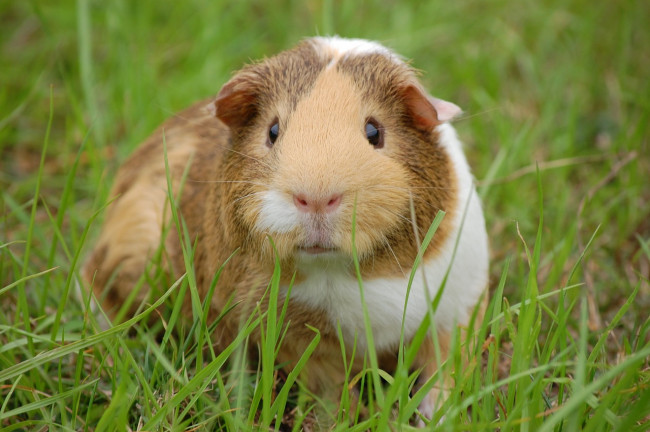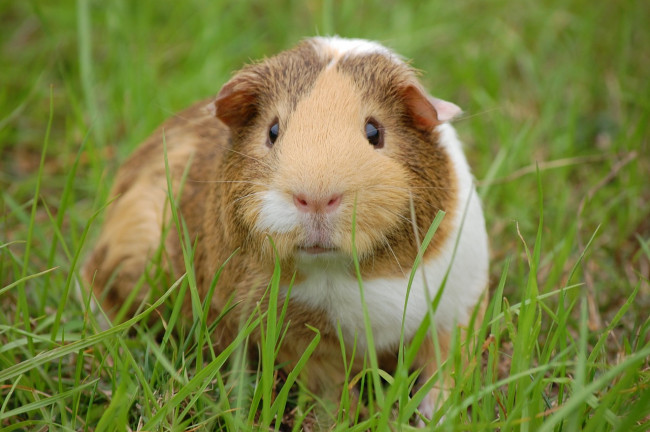"How to Calculate Your Dog's Age in Human Years: A Simple Guide"
Introduction: When it comes to our beloved canine companions, understanding their age is more than just a matter of curiosity. Calculate Your Dog's Age in Human Years– it can impact their health, behavior, and overall well-being. The old adage of "one dog year equals seven human years" has been a common way to estimate a dog's age inerms. However, this rule of thumb doesn't quite capture the complexities of aging in dogs. In this guide, we'll delve into the science behind calculating your dog's age in human years and provide you with a more accurate method that considers their size, breed, and other factors. Let's explore how to determine your furry friend's age in a way that's meaningful and helpful.
Understanding Dog Aging: Beyond the 7-Year Rule
Contrary to the traditional belief that dogs age seven years for every one human year, canine aging is more nuanced. Different dog breeds age at varying rates, and the first few years of a dog's life see more rapid changes than later years. Large dog breeds tend to age faster than small breeds. As such, a more accurate calculation method has been developed by veterinarians and researchers that takes these factors into account.
The Revised Dog Age Calculation Formula
To calculate your dog's age in human years, you can use the following formula:
Human Age = 16 * ln(dog's age) + 31
Here, ln represents the natural logarithm. This formula provides a more accurate representation of a dog's age based on current scientific understanding.
Step-by-Step Guide to Calculating Your Dog's Age:
Determine Your Dog's Age: Begin by knowing your dog's actual age in terms of years.
Calculate the Natural Logarithm: Use a calculator or an online tool to find the natural logarithm of your dog's age.
Apply the Formula: Multiply the natural logarithm result by 16 and then add 31 to get your dog's age in human years.
Example Calculation:
Let's say your dog is 4 years old: Human Age = 16 * ln(4) + 31 ≈ 53.6 years
Factors Influencing Aging:
Breed Size: Larger breeds tend to age faster than smaller breeds.
Breed-Specific Aging: Different breeds have different aging patterns; for instance, smaller dogs might live longer than larger ones.
Healthcare: A dog's overall health, diet, exercise, and medical care can impact their aging process.
Lifestyle: Dogs living in a h of a dog's life see more rapid changes than later years. Large dog breeds tend to age faster than small breeds. As such, a more accurate calculation method has been developed by veterinarians and researchers that takes these factors into account.
The Revised Dog Age Calculation Formula
To calculate your dog's age in human years, you can use the following formula:
Human Age = 16 * ln(dog's age) + 31
Here, ln represents the natural logarithm. This formula provides a more accurate representation of a dog's age based on current scientific understanding.
Step-by-Step Guide to Calculating Your Dog's Age:
Determine Your Dog's Age: Begin by knowing your dog's actual age in terms of years.
Calculate the Natural Logarithm: Use a calculator or an online tool to find the natural logarithm of your dog's age.
Apply the Formula: Multiply the natural logarithm result by 16 and then add 31 to get your dog's age in human years.
Example Calculation:
Let's say your dog is 4 years old: Human Age = 16 * ln(4) + 31 ≈ 53.6 years
Factors Influencing Aging:
Breed Size: Larger breeds tend to age faster than smaller breeds.
Breed-Specific Aging: Different breeds have different aging patterns; for instance, smaller dogs might live longer than larger ones.
Healthcare: A dog's overall health, diet, exercise, and medical care can impact their aging process.
Lifestyle: Dogs living in a healthy environment with regular exercise and mental stimulation may age more gracefully.
Why Knowing Your Dog's Age Matters:
Healthcare Planning: Understanding your dog's age helps in making appropriate healthcare decisions, such as vaccinations, regular check-ups, and preventive care.
Behavioral Expectations: Age-related changes may influence behavior, training needs, and activity levels.
Nutritional Needs: Age-appropriate diets can support your dog's changing nutritional requirements.
Senior Care: Recognizing when your dog reaches their senior years allows you to provide them with the specialized care they need.
Conclusion: By using the revised formula to calculate your dog's age in human years, you can gain a more accurate understanding of where your furry friend is in their life journey. This knowledge empowers you to provide tailored care, promote their well-being, and cherish every moment spent with them. Remember, just like us, our dogs age uniquely, and it's our responsibility to ensure they live their best lives at every stage.
in by knowing your dog's actual age in terms of years.
Calculate the Natural Logarithm: Use a calculator or an online tool to find the natural logarithm of your dog's age.
Apply the Formula: Multiply the natural logarithm result by 16 and then add 31 to get your dog's age in human years.
Example Calculation:
Let's say your dog is 4 years old: Human Age = 16 * ln(4) + 31 ≈ 53.6 years
Factors Influencing Aging:
Breed Size: Larger breeds tend to age faster than smaller breeds.
Breed-Specific Aging: Different breeds have different aging patterns; for instance, smaller dogs might live longer than larger ones.
Healthcare: A dog's overall health, diet, exercise, and medical care can impact their aging process.
Lifestyle: Dogs living in a h of a dog's life see more rapid changes than later years. Large dog breeds tend to age faster than small breeds. As such, a more accurate calculation method has been developed by veterinarians and researchers that takes these factors into account.
The Revised Dog Age Calculation Formula
To calculate your dog's age in human years, you can use the following formula:
Human Age = 16 * ln(dog's age) + 31
Here, ln represents the natural logarithm. This formula provides a more accurate representation of a dog's age based on current scientific understanding.
Step-by-Step Guide to Calculating Your Dog's Age:
Determine Your Dog's Age: Begin by knowing your dog's actual age in terms of years.
Calculate the Natural Logarithm: Use a calculator or an online tool to find the natural logarithm of your dog's age.
Apply the Formula: Multiply the natural logarithm result by 16 and then add 31 to get your dog's age in human years.
Example Calculation:
Let's say your dog is 4 years old: Human Age = 16 * ln(4) + 31 ≈ 53.6 years
Factors Influencing Aging:
Breed Size: Larger breeds tend to age faster than smaller breeds.
Breed-Specific Aging: Different breeds have different aging patterns; for instance, smaller dogs might live longer than larger ones.
Healthcare: A dog's overall health, diet, exercise, and medical care can impact their aging process.
Lifestyle: Dogs living in a healthy environment with regular exercise and mental stimulation may age more gracefully.
Why Knowing Your Dog's Age Matters:
Healthcare Planning: Understanding your dog's age helps in making appropriate healthcare decisions, such as vaccinations, regular check-ups, and preventive care.
Behavioral Expectations: Age-related changes may influence behavior, training needs, and activity levels.
Nutritional Needs: Age-appropriate diets can support your dog's changing nutritional requirements.
Senior Care: Recognizing when your dog reaches their senior years allows you to provide them with the specialized care they need.
Conclusion: By using the revised formula to calculate your dog's age in human years, you can gain a more accurate understanding of where your furry friend is in their life journey. This knowledge empowers you to provide tailored care, promote their well-being, and cherish every moment spent with them. Remember, just like us, our dogs age uniquely, and it's our responsibility to ensure they live their best lives at every stage.
in by knowing your dog's actual age in terms of years.
Calculate the Natural Logarithm: Use a calculator or an online tool to find the natural logarithm of your dog's age.
Apply the Formula: Multiply the natural logarithm result by 16 and then add 31 to get your dog's age in human years.
Example Calculation:
Let's say your dog is 4 years old: Human Age = 16 * ln(4) + 31 ≈ 53.6 years
Factors Influencing Aging:
Breed Size: Larger breeds tend to age faster than smaller breeds.
Breed-Specific Aging: Different breeds have different aging patterns; for instance, smaller dogs might live longer than larger ones.
Healthcare: A dog's overall health, diet, exercise, and medical care can impact their aging process.
Lifestyle: Dogs living in a h of a dog's life see more rapid changes than later years. Large dog breeds tend to age faster than small breeds. As such, a more accurate calculation method has been developed by veterinarians and researchers that takes these factors into account.
The Revised Dog Age Calculation Formula
To calculate your dog's age in human years, you can use the following formula:
Human Age = 16 * ln(dog's age) + 31
Here, ln represents the natural logarithm. This formula provides a more accurate representation of a dog's age based on current scientific understanding.
Step-by-Step Guide to Calculating Your Dog's Age:
Determine Your Dog's Age: Begin by knowing your dog's actual age in terms of years.
Calculate the Natural Logarithm: Use a calculator or an online tool to find the natural logarithm of your dog's age.
Apply the Formula: Multiply the natural logarithm result by 16 and then add 31 to get your dog's age in human years.
Example Calculation:
Let's say your dog is 4 years old: Human Age = 16 * ln(4) + 31 ≈ 53.6 years
Factors Influencing Aging:
Breed Size: Larger breeds tend to age faster than smaller breeds.
Breed-Specific Aging: Different breeds have different aging patterns; for instance, smaller dogs might live longer than larger ones.
Healthcare: A dog's overall health, diet, exercise, and medical care can impact their aging process.
Lifestyle: Dogs living in a healthy environment with regular exercise and mental stimulation may age more gracefully.
Why Knowing Your Dog's Age Matters:
Healthcare Planning: Understanding your dog's age helps in making appropriate healthcare decisions, such as vaccinations, regular check-ups, and preventive care.
Behavioral Expectations: Age-related changes may influence behavior, training needs, and activity levels.
Nutritional Needs: Age-appropriate diets can support your dog's changing nutritional requirements.
Senior Care: Recognizing when your dog reaches their senior years allows you to provide them with the specialized care they need.
Conclusion: By using the revised formula to calculate your dog's age in human years, you can gain a more accurate understanding of where your furry friend is in their life journey. This knowledge empowers you to provide tailored care, promote their well-being, and cherish every moment spent with them. Remember, just like us, our dogs age uniquely, and it's our responsibility to ensure they live their best lives at every stage.
in by knowing your dog's actual age in terms of years.
Calculate the Natural Logarithm: Use a calculator or an online tool to find the natural logarithm of your dog's age.
Apply the Formula: Multiply the natural logarithm result by 16 and then add 31 to get your dog's age in human years.
Example Calculation:
Let's say your dog is 4 years old: Human Age = 16 * ln(4) + 31 ≈ 53.6 years
Factors Influencing Aging:
Breed Size: Larger breeds tend to age faster than smaller breeds.
Breed-Specific Aging: Different breeds have different aging patterns; for instance, smaller dogs might live longer than larger ones.
Healthcare: A dog's overall health, diet, exercise, and medical care can impact their aging process.
Lifestyle: Dogs living in a h of a dog's life see more rapid changes than later years. Large dog breeds tend to age faster than small breeds. As such, a more accurate calculation method has been developed by veterinarians and researchers that takes these factors into account.
The Revised Dog Age Calculation Formula
To calculate your dog's age in human years, you can use the following formula:
Human Age = 16 * ln(dog's age) + 31
Here, ln represents the natural logarithm. This formula provides a more accurate representation of a dog's age based on current scientific understanding.
Step-by-Step Guide to Calculating Your Dog's Age:
Determine Your Dog's Age: Begin by knowing your dog's actual age in terms of years.
Calculate the Natural Logarithm: Use a calculator or an online tool to find the natural logarithm of your dog's age.
Apply the Formula: Multiply the natural logarithm result by 16 and then add 31 to get your dog's age in human years.
Example Calculation:
Let's say your dog is 4 years old: Human Age = 16 * ln(4) + 31 ≈ 53.6 years
Factors Influencing Aging:
Breed Size: Larger breeds tend to age faster than smaller breeds.
Breed-Specific Aging: Different breeds have different aging patterns; for instance, smaller dogs might live longer than larger ones.
Healthcare: A dog's overall health, diet, exercise, and medical care can impact their aging process.
Lifestyle: Dogs living in a healthy environment with regular exercise and mental stimulation may age more gracefully.
Why Knowing Your Dog's Age Matters:
Healthcare Planning: Understanding your dog's age helps in making appropriate healthcare decisions, such as vaccinations, regular check-ups, and preventive care.
Behavioral Expectations: Age-related changes may influence behavior, training needs, and activity levels.
Nutritional Needs: Age-appropriate diets can support your dog's changing nutritional requirements.
Senior Care: Recognizing when your dog reaches their senior years allows you to provide them with the specialized care they need.
Conclusion: By using the revised formula to calculate your dog's age in human years, you can gain a more accurate understanding of where your furry friend is in their life journey. This knowledge empowers you to provide tailored care, promote their well-being, and cherish every moment spent with them. Remember, just like us, our dogs age uniquely, and it's our responsibility to ensure they live their best lives at every stage.















